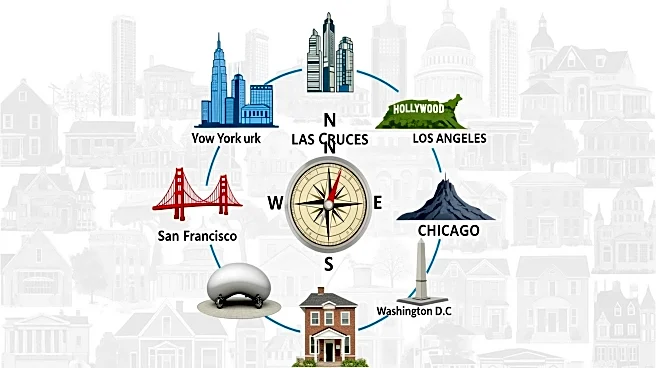What's Happening?
Lewiston is becoming a popular destination for homebuyers from various major U.S. metropolitan areas. According to cross-market demand data from Realtor.com, cities such as Seattle, Los Angeles, and Spokane are showing significant interest in Lewiston's
housing market. The scarcity of homes nationwide, coupled with elevated prices, has made online house hunting an essential tool for prospective buyers. The data indicates that Seattle leads with a 24.6% view share, followed by Los Angeles at 8.5% and Spokane at 8.2%. This trend reflects a broader shift in housing preferences as buyers seek affordable and desirable locations.
Why It's Important?
The interest in Lewiston from major metros highlights the ongoing challenges in the U.S. housing market, where limited inventory and high prices are driving buyers to explore new areas. This shift can have significant economic implications for Lewiston, potentially boosting local real estate markets and stimulating economic growth. As more buyers from high-cost areas consider relocation, Lewiston may experience changes in demographics, infrastructure demands, and community dynamics. Understanding these trends is crucial for local policymakers and real estate professionals to adapt to evolving market conditions.
What's Next?
As Lewiston continues to attract interest from homebuyers, local authorities and developers may need to address potential infrastructure and housing demands. This could involve expanding housing inventory, improving amenities, and ensuring sustainable growth to accommodate new residents. Real estate professionals might also focus on marketing strategies that highlight Lewiston's appeal to out-of-state buyers. Monitoring these developments will be essential for anticipating future changes in the local housing market.
Beyond the Headlines
The migration of homebuyers to Lewiston from larger metros raises questions about urban planning and sustainable development. It underscores the need for balanced growth that preserves community character while accommodating new residents. Additionally, this trend may influence cultural and social dynamics as diverse populations integrate into the local community.













